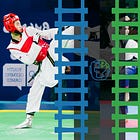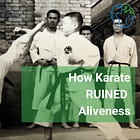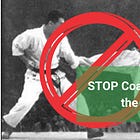Teaching Martial Arts: 7 Concepts that will Transform Your Classes and Your Students
Your students will thank you, and you won't believe how much better your martial arts classes are when you implement these concepts.
As a taekwondo and karate instructor, I could never quite figure out why my instruction and lesson plans didn’t yield my student results the way I expected.
(I imagine that many kickboxing coaches, muay thai coaches, kung fu instructors, and jiu jitsu instructors feel the same way, too. It’s a constant frustration with teaching martial arts.)
After a lot of research, I found out there’s a bunch of science that’s been examining and solving these problems for decades.
Unfortunately, most martial arts instructors have never heard of any of this and don’t have access to the books and papers.
After competing an M.Ed. in teaching and learning, I resolved to take all this new knowledge, simplify it, and make sure other martial arts teachers can learn about it.
A sneak peek inside…
How to Design Insanely Effective Martial Arts Training Sessions
Session Intention
Repetition Without Repetition
Representative Learning Design
Variable Session Design
How to Deliver Martial Arts Teaching
External Instruction
Effective Feedback
Praise Correct Praise (Sandwich Method)
BONUS: Martial Arts Teaching Tips to AVOID…
Excited?
Me too.
I’m a martial arts teaching nerd the same as you, and I can’t wait to share all my experience and research.
Let’s dive in.
Part 1: How to Design Insanely Effective Martial Arts Training Sessions
Don’t plan lessons? Start.
Martial arts lesson planning is essential to masterful instruction.
Good coaching requires both that you are prepared and that you are able to adapt to the real-time feedback of your mat.
In that next session, we’ll talk more about stuff to do during class. But in this section, we’re exploring the best, most scientifically supported ways to design training for your martial arts athletes.
Session Intention
What do you intend to accomplish?
Having an objective or goal to your session is a fundamental of all good education practice, from martial arts to math class to workplace training.
Every session should have a clear idea of what it’s meant to accomplish. This will create a clear end point toward which to organize and design those sessions in a more cohesive and effective way.
It sounds simple, but it’s easy to clog up sessions with a bunch of “stuff” you want to cover that have no relationship to each other or the needs of your students.
Spend the extra 5 to 10 minutes before you plan a lesson.
Here’s a bonus: now that each session has a clear goal, how might you assess the effectiveness of the session?
(There are common, very unintuitive hang-ups to proper assessment of martial arts learning. Read the article to find out what you need to know.)
Repetition Without Repetition
Because they’ve already decided what works best, martial arts coaches design training that revolves around a sort of rote repetition of those techniques in a sterile and compliant environment.
The purpose of these repetitions is to iron out variability in the visual quality of the movement pattern, because perfect or ideal technique looks the same every time it’s performed. This repeatability is a precondition of improved performance and future mastery—or so we’re told…
In 1922, a legendary Soviet scientist by the name of Nikolai Bernstein put this notion to the test.
He tasked novice and expert blacksmiths to hammer sheets of metal; and they wore lights on their joints so that their trajectory paths could be tracked by old fashioned cameras.
What he found was astonishing and unintuitive.
The novice’s results, unsurprisingly, had highly variable outcomes because they had highly variable hammer swings. This seemed to confirm the conventional belief novices were not as skillful because their swing technique was not repeatable…
But not so fast.
The experienced blacksmiths hit the same spot on the chisel—consistency of outcome, a marker of skill—but they did so via different swings every time.
Bernstein labeled this unintuitive phenomenon “repetition without repetition.” Later, it became a principle of effective training design.
Bernstein’s experiment busted the most pervasive myth: that of the ideal, repeatable technique.
More importantly, he proved experts do not produce more consistent movement pattern quality than beginners. Instead, experts produce a different kind of variability than beginners—functional.
Applied to martial arts training, the basic idea of repetition without repetition is to give students repeat exposure to problems to solve, not idealized techniques to repeat.
A 3 step process for designing Repetition Without Repetition into martial arts training
Martial arts is a bit different than hammering metal as a blacksmith…
There’s a dynamic opponent to deal with, more rules, and messier task goals…
Therefore, some additional care is necessary to apply repetition without repetition (RWR) to martial arts training.
Here is a 3 step process I use to accomplish RWR in the context of martial arts:
Identify a movement problem
Translate problem into a task
Ensure sufficient time on, and repeat exposure to, the task
Sport taekwondo offers a useful example of this in action for martial arts, but you’ll have to read my article “There is No Perfect Technique” to learn more. Link below.
Representative Learning Design
Representative learning design is the single most important principle of effective martial arts practice design you’ll ever learn about.
So what is it?
Representative design actually began as a way to improve scientific research. Classically, psychological experiments—and specifically, those related to motor skill—were conducted under sterile laboratory conditions and measured according to artificial metrics.
In its place, Brunswik postulates representative design. The basic idea was to conduct experiments under conditions that more closely resemble and behave like real situations, and then to measure according to metrics that matter in situ, or real life.
Representative design, in Brunswik’s estimation, would have greater ecological validity—another important term and concept he seems to have coined.
Similarly, combat sports has long been plagued by deconstructed or decomposed drilling, what we in martial arts typically refer to as static drilling and technique repetitions.
Contra decomposed training, Pinder, et al. takes the principle of representative design and applies it to the design of practice tasks in sports.
From their landmark paper, Representative learning design and functionality of research and practice in sport (p. 151):
To attain representative learning design, practitioners should design dynamic interventions that consider interacting constraints on movement behaviors, adequately sample informational variables from the specific performance environments, and ensure the functional coupling between perception and action processes.
Read the article below to learn more about RLD and why it’s critically important for martial artists to understand…
The future integrity—or restoration—of your art depends on it.
How RLD works for martial arts
Aliveness really is the clincher with RLD. It is the foundation upon which all other representative elements are built. Without it, the representativeness of a practice task is broken.
Aliveness is tactical interaction between two performers that is both unscripted and uncooperative at the same time.
According to Jia Yi Chow, et al. (2016), the “design of representative practice tasks requires that task simulations be based on accurate sampling by coaches and teachers of the informational variables available in specific performance environments” (p. 94).
These variables might better be thought of as dynamic elements because dynamics are the conditions in a system that drive change and adaptation and elements are the parts that make up a whole. From an RLD perspective, dynamics are the most important elements that are always present in the performance environment.
For example, one dynamic element of any combat sport match would be barriers within the bounds of which an athlete’s movement is constrained (i.e., a ring). Another dynamic element would be the freeness and self-determination with which one’s opponent attacks and defends; his unscriptedness.
Removing any of these dynamics during practice would diminish the realism of that practice. Therefore, the presence of a sufficient number of these dynamics in the practice environment is ideally the marker for what is sufficiently “representative” and thus for what can be expected to produce strong transfer.
Learn more about how to understand and use RLD in martial arts training by reading the story below.
Variable Session Design
Sports motor learning researcher Jia Yi Chow, et al. (2016) poses an interesting question to martial arts instructors:
[C]oaches have a responsibility to ensure that their performers are prepared for anything that the environment or the task can throw at them. For example…[h]ow would a tae kwon do performer cope if a new opponent appeared on the scene who was taller, stronger and faster? (Nonlinear Pedagogy in Skill Acquisition, p. 153)
Variability boils down to unpredictable changes in the practice environment and the tasks you perform during practice. The goal of variability in practice is to build a learner’s ability to adapt to unstable circumstances like a fight.
Variability and repetition without repetition (RWR) go hand in hand. In fact, variable practice design is a way to create opportunities for learners to engage in repetition without repetition.
Whereas RWR describes a principle of how to achieve a single task goal, variability of practice works at several scales of analysis and across many tasks and aspects of sport.
Activity and session level variability are the most available ways to inject variability into martial arts training, so we’ll consider them in more detail below.
Activity Variability
Your variability box is checked well enough if all your activities are alive. My definition of aliveness is as follows.
Aliveness is tactical interaction between two performers that is both unscripted and uncooperative at the same time.
One unobvious example of variability might be manipulating the practice environment. Training jiu jitsu standup in sand, for example, could help athletes develop novel takedown solutions as well as act as a protectant to their joints, especially their feet and ankles.
Session Variability and Interleaving
Since CLA practice design requires focus on specific tasks—especially more so for beginners—it’s easy to get shortsighted on which games to include in a single session.
This is where session-level variability becomes essential. Not only is variability useful in its own right (skill acquisition, antifragility, perception), but it helps ensure we hit as many different kind of sport skills as possible. This way, we don’t spend an entire session working on only one or two things.
At the same time, we still want a session intent—the first of the four major learning design principles of CLA. To balance both the need for variability and a focus, you could try something like the format below.
Warmup game (e.g., fighting for double underhooks)
Live exercise A
Live exercise B
Live exercise A
Live exercise C
Rounds of free sparring
The way it’s structured, you get to practice in at least 3 different scenarios and yet with the repetition of exercise A, the session still has a focus. They get the best of both worlds: the benefit of drilling down on something as well as the strengths of variable practice design.
In the next session, you could structure class this way:
Warmup game
Live exercise B
Live exercise C
Live exercise B
Live exercise D
Rounds
This structuring practice is known as interleaving, and it works both within a session and between sessions to ensure that you’re not only getting enough variability but also enough repeat exposures to scenarios to gain sufficient practice there.
Part 2: How to Deliver Martial Arts Teaching
You know how to design fantastic sessions.
Now you ask: How can I deliver them in the most effective way possible?
Glad you asked.
If you were floored by the previous part of the article, part 2 will knock your socks off and make you question everything you’ve ever been “taught” about teaching martial arts.
External Instruction
In the motor learning and motor control literature, there are two approaches to understand how we control our movements: internal focus and external focus.
An internal focus of attention is focused on one's body and how it's moving, the sensation. Internal focus coaching involves instructions or cues which direct the athlete to focus on his body.
E.g. of internal focus:
“Swing your leg and turn your hips and knee over about 90 degrees, making contact near the bottom of your shin.”
An external focus of attention is focused on the target and/or the effect one is meant to make upon that target. The body is scarcely referenced except to clue learners of an intended effect. External coaching involves instructions and cues that direct the athlete to focus on his target.
E.g. of external focus:
“Smash the shin guard into the middle of the bag.”
A quick summary of the external focus of attention science, as spearheaded by discoverer and lead researcher, Gabriele Wulf:
Immediately improves motor control during task execution
Improves future motor control of the same task, even without being re-cued or re-instructed with external language.
Boosts motor learning (relatively permanent improvement measured by transfer tests)
A friend of mine, Thomas Huskey, a taekwondo master and coach, was reluctant to try this for initial instruction of basic movement skills for TKD beginners.
However, he trusted me, and eventually he tried it out…
To astonishing results.
He reported to me that it worked incredibly well despite his skepticism:
Students were able to participate productively in live sparring games immediately and find scoring opportunities quickly that he previously never saw at the novice level.
Section References
Wulf, Gabriele. (2007). Attention and motor skill learning (1st ed.). Human Kinetics. 1-81.
Chua, L.-K., Jimenez-Diaz, J., Lewthwaite, R., Kim, T., & Wulf, G. (2021). Superiority of external attentional focus for motor performance and learning: Systematic reviews and meta-analyses. Psychological Bulletin, 147(6), 618–645. https://doi.org/10.1037/bul0000335
Effective Feedback
There are two main types of performance feedback you can use as a martial arts coach: KP Feedback and KR Feedback.
KP stands for “Knowledge of Performance” and refers to feedback about how the athlete is moving.
KR stands for “Knowledge of Results” and refers to feedback which reveals or clarifies the effect of an athlete’s performance toward a task goal.
KP Feedback
KP feedback should be used sparingly because it induces an internal focus of attention, which we know from the science tends to impede performance and learning.
KP is best used, mostly, for artistic/error-based activities such as kata or poomsae, where displaying conformity to an aesthetic standard is the main purpose of the skill.
KR Feedback
KR feedback helps learners understand if they were successful or not.
If they they weren’t, they can then start to problem solve their own problems. If they are successful, they understand that what they’re doing is a good direction to pursue.
This feedback approach is preferred because it supports independent decision making, troubleshooting, and adaptability in your martial arts students.
Praise Correct Praise (PCP)
Praise correct praise, also known as the “sandwich method,” is the best way to deliver correction when you need to correct a student.
Getting correction is a vulnerable and easily demoralizing experience for students.
You can prevent feelings of embarrassment and loss of motivation by delivering constructive criticism inside of affirmations about something else the student is doing well.
For example:
Johnny, love the energy and focus in your face. Try to get your knee higher before you snap out the front kick during your poomsae. Excellent. Very good height on the knee now. Keep it up!
PCP only works well when you are specific about your compliments. Saying “good job” or another generic praise, followed by a criticism, is immediately disingenuous to a student.
PCP is one of those old school teaching techniques that was always good and always will be. Out of all the concepts listed in this article, it’s probably one of the top easiest to implement.
Try it out!
🚫 3 Martial Arts Teaching Tips to Avoid 🚫
Having covered the cutting-edge coaching science for combat sports, I want to warn you about some bad—but sadly common—advice floating around about how to teach martial arts.
A fair warning: you’ll recognize all three of these, and you might be surprised they are under scrutiny here.
Keep an open mind. The science on this stuff is good, and cutting out these practices will only make you a more excellent martial arts instructor.
❌ Disguised Repetition
Disguised repetition is based on a long debunked view of learning as a rote exercise. It’s a Band-Aid, recognizing the monotony of traditional repetitious work while making it slightly more palatable by camouflaging it in other activities.
In other words, it’s a concession to make a broken model feel a little less broken. It doesn’t improve learning by any means.
Come to find out, learners should not do rote repetitions whether hidden across different activities or not.
Repetition without repetition is a much better framework for how to hit key skills multiple times and in multiple ways.
Modern research has also discovered that variability—including instability and unpredictability in the practice environment—is an incredible driver of learning that transfers to the performance environment you want.
❌ Drilling Down
The term “drill” is often used synonymously with rote repetition styles of training. They are often very artificial and involve highly controlled environments.
The most pervasive view of learning favors repetition, especially repetition by rote. Logically, it makes sense for adherents of this concept of learning to “drill down”—focus for extended periods of time—on individual techniques and skills that need work.
Current research, however, has totally blown this out of the water. Here are thins that feel productive but you should never do:
❌ Drill down on one technique, position, or skill for the total duration of a month
❌ Drill down one thing for the total duration of a week
❌ Drill down one one thing for the total duration of a class
Variability is not just the spice of life but, unintuitively, a way to boost learning, become more adaptable, and even prevent injury. Always look for ways to create more variability in your classes and your future programming.
I explore the variability of practice effect in a bit more detail in a foundational article on variability, errors, perception, and skill.
❌ Coaching to the Average
Instructors know everything about martial arts abstracts, but they don’t (seemingly) care to know much about the specific people who inhabit their mats.
Talk about the “perfect” or “best” technique, of course, implicitly assumes that everyone’s body is the same.
Coach to your mat, and coach to the individual.
Check the story link below to learn more.



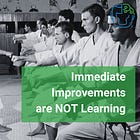
![There is No Perfect Technique [How We Learn to Move, Chapter 1 Companion]](https://substackcdn.com/image/fetch/w_140,h_140,c_fill,f_auto,q_auto:good,fl_progressive:steep,g_auto/https%3A%2F%2Fsubstack-post-media.s3.amazonaws.com%2Fpublic%2Fimages%2Fb555308f-2847-43b5-811d-69519d71db24_1456x1048.png)
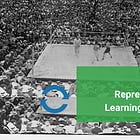
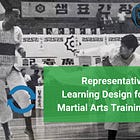

!["Errors" are Necessary for Perception and Skill [How We Learn to Move, Chapter 2 Companion]](https://substackcdn.com/image/fetch/w_140,h_140,c_fill,f_auto,q_auto:good,fl_progressive:steep,g_auto/https%3A%2F%2Fsubstack-post-media.s3.amazonaws.com%2Fpublic%2Fimages%2Ff825d1f2-bc10-4f64-a141-53e21f57b9e1_1456x1048.png)
